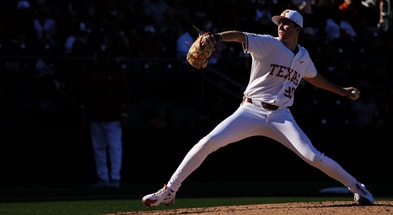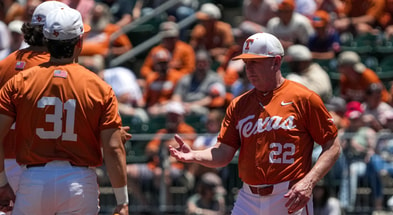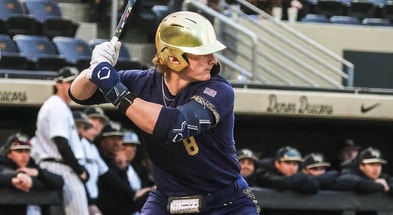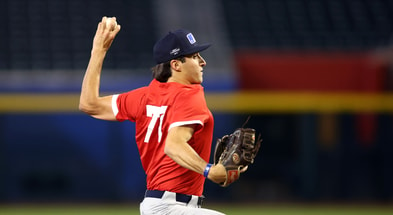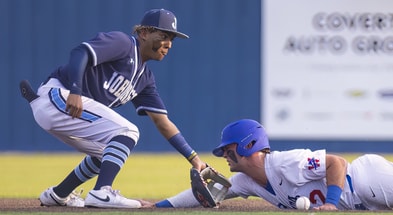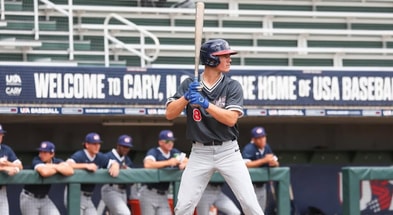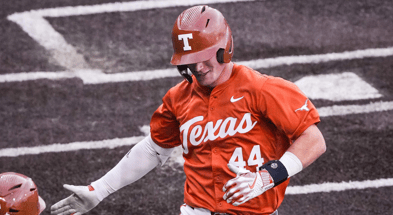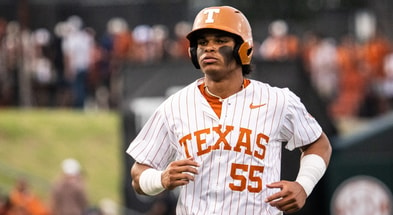Notes on every Texas baseball pitching transfer and their roles in 2026
Last year’s pitching staff was nothing short of phenomenal for Texas Baseball.
[Sign up for Inside Texas TODAY and get the BEST Longhorns scoop!]
First-year pitching coach Max Weiner, a part of head coach Jim Schlossnagle’s staff at Texas A&M in years prior, lived up to every piece of hype and expectation placed on him, turning a group of incomplete and inexperienced arms into arguably the best staff in the nation.
Texas was sixth in ERA, second in WHIP, and third in opponent batting average. Texas was the only team to reach that level of rankings last season, riding off the momentum of a solid rotation and elite bullpen, headed by All-American and Freshman of the Year Dylan Volantis.
Heading into 2026, this rotation is only looking more impressive. Texas loses only two graduates, Friday starter Jared Spencer and bullpen arm Andre Duplantier II, and isn’t in much danger of losing anyone else to the draft. The most IP by a pitcher entering the portal was four.
The Longhorns entered the portal window with a good base plan: Volantis replacing Spencer in the Friday starter role, Luke Harrison returning to the Saturday spot, and a bullpen filled with returning arms like Max Grubbs, Thomas Burns, and Grayson Saunier. One problem remained, however, as Texas was razor-thin on left-handed pitchers in the bullpen. Already a problem in 2025, Volantis’ move to the rotation made it so Ethan Walker (14 1/3 IP, 4.40 ERA in ’25) was the only returning southpaw. Thankfully, this problem was more than addressed in the transfer portal.
LHP Luke Dotson
The first domino to fall in the lefty renaissance this month, Dotson immediately ranked as Texas’ best transfer when he jumped from Starkville to Austin on June 16. Dotson is exactly what you look for in a portal bullpen arm: young but with experience and a giant frame with the ability to be molded into a star.
The 6’4″ Georgia native spent two seasons at Mississippi State, tossing a 3.09 ERA in 23 innings in 2025. In a loss to Texas early in the year, Dotson struck out three in 1 2/3 innings, keeping the Bulldogs in what almost became a comeback against the Horns. Dotson’s main concern, like many Texas pitchers, comes with command as he allowed 17 free bases in those 23 innings. Still, a 96 MPH fastball paired with a cutter-changeup combo that can fool righties gives Dotson the chance to not just be a lefty specialist but a high-leverage option no matter the handedness. Weiner is likely to work to make his curveball, a less common pitch for him in ’25, a plus pitch while retaining his powerful velocity.
LHP Cal Higgins
Talk about a ballplayer. Cal Higgins looks about 40 in some pictures and has a true baseball name. He already knocks off the most important checkmarks on the list of qualities for a crazy lefty bullpen arm.
Higgins is another giant, standing at 6’4″ like Dotson but 35 pounds heavier, and destroyed Conference-USA competition this past season for Western Kentucky. His 1.87 ERA was one of the best in the nation, especially given his 43-inning sample size, and he brought an unworldly 52:11 K/BB ratio.
Top 10
- 1New
Kewan Lacy
Rebels RB decides on future
- 2Hot
Nebraska QB dominoes
Huskers line up multiple visits
- 3
Kenny Minchey
Flips transfer commitment
- 4Trending
Portal Predictions
Predicting transfer commitments
- 5
Bryce Underwood
Decides on Michigan future
Get the Daily On3 Newsletter in your inbox every morning
By clicking "Subscribe to Newsletter", I agree to On3's Privacy Notice, Terms, and use of my personal information described therein.
Higgins starts his stance tight and heavily towards the first base bag, then explodes with a high three-quarters arm slot, making him a nightmare to read from the left side of the plate. Another arm that can touch 96, Higgins’ strikeout numbers may not be as prolific in the SEC, but he profiles well to be one of the best left-on-left out-getters in the league. No one is going to want to step up against a 6’4″, 245-pound Nebraska kid who’s spent a whole offseason in the #ArmFarm.
LHP Haiden Leffew
The final lefty Texas added also hailed from a strong baseball program coming off a disappointing year. Leffew was one of Wake Forest’s most trusted arms in the 2025 season and one of the most coveted lefties Texas could’ve added from the portal. Leffew, similar to Dotson, joins with two years of eligibility left and was productive in a major conference, tossing a 4.46 ERA in 34 IP.
What really separates Leffew is his K/BB ratio, similar to Higgins but in a much harder conference, having walked just 18 batters while striking out 56. He has a tendency to allow contact in an effort to go after strikeouts, something many Texas pitchers avoided last season, which can result in more hits or home runs than fans may be comfortable with.
Still, Leffew possesses one of the best singular pitches on the staff, a changeup that graded analytically as one of the best in the ACC. Changeups are the kind of pitches that allow lefties to pitch more to right-handers, and Leffew’s allows him to disguise a 96 MPH fastball that can blow right by you. He may need to work more on his breaking pitches, specifically working on keeping his slurve-like breaking ball out of the barrel path, but his peripherals make him look like an attractive arm to be able to throw out late in the game.
[Order THE LONGHORN ALPHABET: Your little Longhorns can know about famous plays like Roll Left!]
Schlossnagle has knocked it out of the park in this portal cycle, likely with immense help from Weiner and the scouting department. Texas has gone from a team lacking any depth with lefty arms to one of the deepest bullpens in the SEC in a matter of two weeks.
With these three pitchers, the aforementioned returners, and some fringe long relief options like Jason Flores, Hudson Hamilton, and Cody Howard, Texas may be done in the portal on the pitching side of things. Aiden Moffett’s late departure may have thrown a wrench in the plans for Texas, making one of three options possible: a veteran Sunday starter to allow Ruger Riojas to pitch in a flexible long relief role, a pitcher who can immediately mimic that identity, or a project arm similar to Moffett with multiple years of eligibility.


